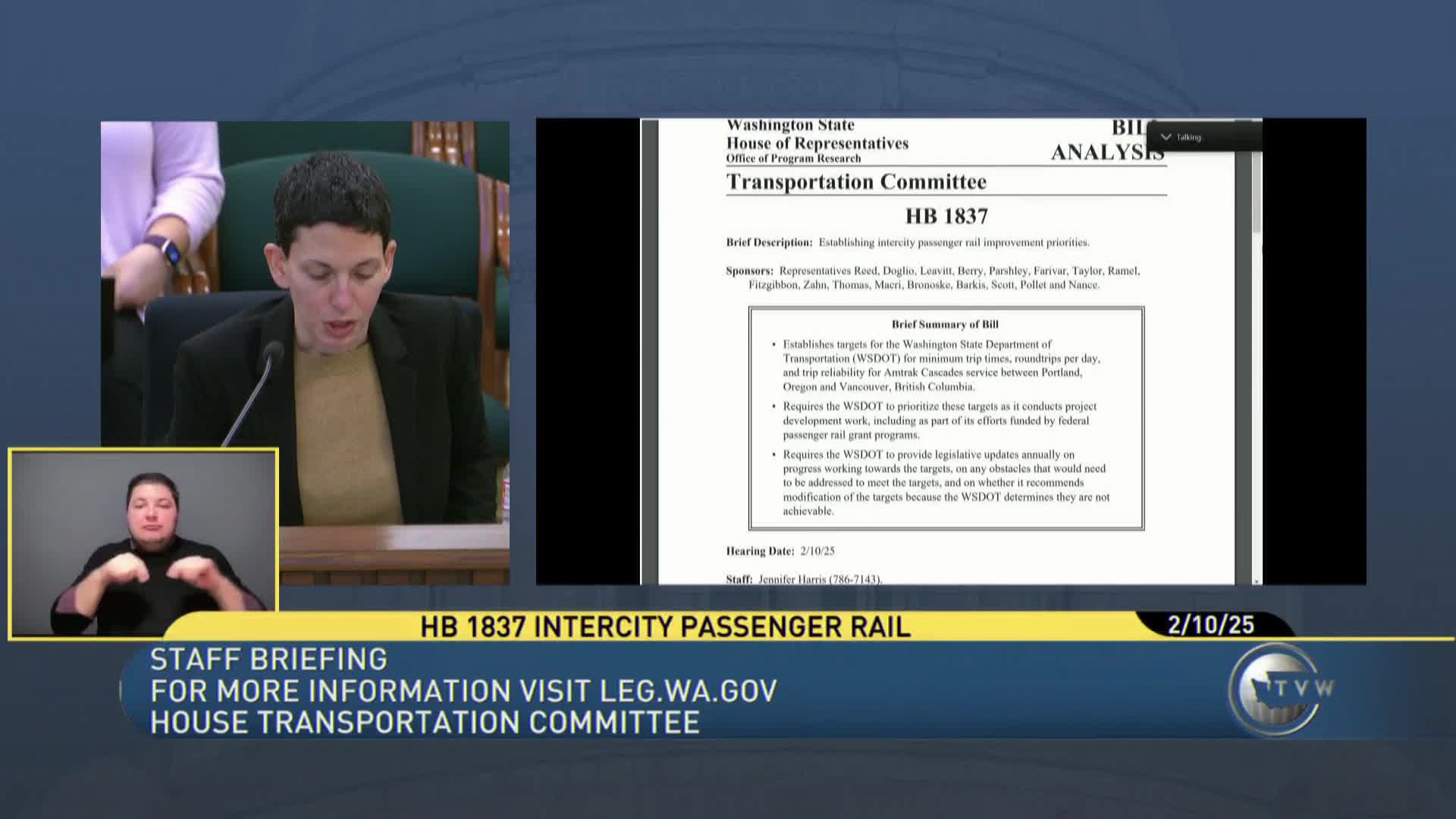WSDOT and ODOT launch 20-year plan to improve Amtrak Cascades service
February 10, 2025 | Appropriations, House of Representatives, Legislative Sessions, Washington
This article was created by AI summarizing key points discussed. AI makes mistakes, so for full details and context, please refer to the video of the full meeting. Please report any errors so we can fix them. Report an error »

The House Appropriations meeting on February 10, 2025, focused on the future of the Amtrak Cascades passenger rail service, highlighting significant developments and funding strategies aimed at improving service efficiency and reliability.
The Washington State Department of Transportation (WSDOT) and the Oregon Department of Transportation (ODOT) are key sponsors of the Amtrak Cascades service, which connects cities from Eugene, Oregon, to Vancouver, British Columbia. Currently, Amtrak operates six daily round trips between Seattle and Portland, two between Seattle and Vancouver, and two between Portland and Eugene.
The meeting underscored the legislative goals established in 1993, which aim to reduce travel times significantly between major cities. The targets include achieving a maximum travel time of 2 hours and 30 minutes between Seattle and Portland by 2035, with a minimum of 14 round trips per day. Additionally, the plan includes a target of 2 hours and 45 minutes between Seattle and Vancouver, with at least five round trips daily, and an on-time performance reliability of 88%.
The discussion also addressed the impact of federal funding cuts in 2013, which increased the need for state support for regional train lines. In response, WSDOT received federal grants to develop a service development plan (SDP) aimed at enhancing the Amtrak Cascades service's reliability and competitiveness. The latest SDP, published in June 2024, outlines potential improvements and integrates plans from both WSDOT and ODOT for a coordinated investment strategy over the next 20 years.
WSDOT is tasked with prioritizing these targets in its project development work, which includes necessary infrastructure investments and collaboration with host railroads. An annual report will be submitted to the legislature detailing progress, challenges, and any recommended modifications to the targets.
The bill discussed in the meeting is set to take effect 90 days after the end of the legislative session, marking a significant step towards enhancing intercity rail travel in the Pacific Northwest.
The Washington State Department of Transportation (WSDOT) and the Oregon Department of Transportation (ODOT) are key sponsors of the Amtrak Cascades service, which connects cities from Eugene, Oregon, to Vancouver, British Columbia. Currently, Amtrak operates six daily round trips between Seattle and Portland, two between Seattle and Vancouver, and two between Portland and Eugene.
The meeting underscored the legislative goals established in 1993, which aim to reduce travel times significantly between major cities. The targets include achieving a maximum travel time of 2 hours and 30 minutes between Seattle and Portland by 2035, with a minimum of 14 round trips per day. Additionally, the plan includes a target of 2 hours and 45 minutes between Seattle and Vancouver, with at least five round trips daily, and an on-time performance reliability of 88%.
The discussion also addressed the impact of federal funding cuts in 2013, which increased the need for state support for regional train lines. In response, WSDOT received federal grants to develop a service development plan (SDP) aimed at enhancing the Amtrak Cascades service's reliability and competitiveness. The latest SDP, published in June 2024, outlines potential improvements and integrates plans from both WSDOT and ODOT for a coordinated investment strategy over the next 20 years.
WSDOT is tasked with prioritizing these targets in its project development work, which includes necessary infrastructure investments and collaboration with host railroads. An annual report will be submitted to the legislature detailing progress, challenges, and any recommended modifications to the targets.
The bill discussed in the meeting is set to take effect 90 days after the end of the legislative session, marking a significant step towards enhancing intercity rail travel in the Pacific Northwest.
View full meeting
This article is based on a recent meeting—watch the full video and explore the complete transcript for deeper insights into the discussion.
View full meeting
